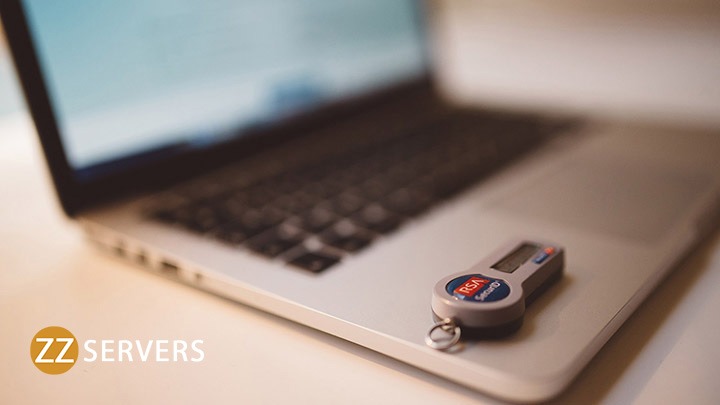Keeping your computer running smoothly starts with understanding the types of hardware maintenance. Every computer user should know four styles of hardware maintenance: preventive care, corrective maintenance, predictive maintenance and evolutionary maintenance.
Preventive maintenance involves regularly cleaning and checking components like CPU, RAM, storage devices, etc., to prevent issues. Corrective maintenance is done when problems occur to fix or replace damaged parts. Predictive maintenance uses tools to monitor for potential issues in advance. Evolutionary care focuses on upgrades and improvements like updating the processor or graphics card to boost performance over time.
By learning about these four key types – preventive, corrective, predictive and evolutionary – you can take the right steps to ensure your computer hardware functions optimally. Let’s take a deeper look at each type of maintenance.
Types of Hardware Maintenance

As discussed in the introduction, four main types of maintenance are important for keeping your computer hardware running smoothly. Let’s dive deeper into what each one entails.
Preventive Maintenance
Preventive maintenance is all about taking small, regular steps to prevent bigger problems down the road. Some key preventive tasks include cleaning your hardware and keeping it dust-free. Dust can clog important vents and cause overheating over time. You also want to check that all cables are securely connected and nothing has come loose. Monitoring your hardware’s temperature using diagnostic tools is another important preventive action so you can address any overheating issues before they impact performance. Remember to keep your operating system and other software up-to-date – new updates often include important security fixes and stability improvements. Taking a preventive approach through regular cleaning and checks is much better than ignoring issues until they escalate.
Corrective Maintenance
Some issues may still crop up, no matter how diligent you are with preventive maintenance. It is where corrective maintenance comes in. When a problem occurs, carefully diagnose and identify the root cause. It may require testing individual components. Once you’ve determined what needs fixing, take the right corrective action – whether repairing the faulty part, replacing it with an identical piece, or upgrading to a better option. Take the diagnosis step, though. Jumping straight to replacing parts can save time and money if you need more clarification on the problem.
Predictive Maintenance
While preventive maintenance is based on routine care, predictive maintenance leverages tools and data to monitor your hardware proactively for potential issues. Monitoring temperatures, hard disk health, and performance metrics over time can provide valuable insights. If diagnostic tools detect any concerning trends, you’ll have a chance to address problems before they escalate into full-blown failures. This predictive approach allows for preventive action rather than waiting for something to stop working.
Evolutionary Maintenance
Over the years, hardware technology is constantly advancing. Evolutionary maintenance involves upgrading your system to benefit from new capabilities and improved components. For example, increasing your RAM can boost performance if your usage demands it. Upgrading your processor every few years can also breathe new life into an ageing PC. Remember your peripheral devices, too – replacing an old monitor with a high-definition model enhances your experience. You can keep your system performing at its best through strategic upgrades by continually evaluating your needs versus your hardware’s potential.
Preventive Maintenance Best Practices

Beyond regular cleaning and checks, follow these preventive maintenance best practices to keep your system running smoothly:
Dust computers at least monthly with a compressed air duster. Pay extra attention to fans and vents. Check for physical damage or wear and tear on components. Loose connections can cause glitches. Monitor and log temperatures using tools like Open Hardware Monitor. Address overheating promptly.
Back up your data regularly to an external drive. Test restores from backups occasionally. Go through software updates promptly. Patching is critical for security and stability fixes. Organize your cables neatly out of airways. Tidy lines last longer and make repairs easier.
Common Hardware Issues by Component
Here are some issues commonly associated with specific hardware components:
CPU overheating causes slowdowns and crashes. Clean fans/heatsinks regularly. Faulty RAM results in random errors. Check for loose connections or use memtest86 to diagnose. Bad sectors on hard disk lead to data loss. Back up important files and replace failing drives.
Graphics card artefacts on the screen mean it’s time for an upgrade or replacement. Old power supplies could be more efficient and stable. Upgrade for better performance and reliability. Peripherals like monitors and printers need occasional cleaning to avoid jams and glitches.
Conclusion
Preventive maintenance keeps your hardware running smoothly through regular cleaning, checks and software updates. Corrective maintenance fixes issues by accurately diagnosing problems and taking the right repair or replacement action.
Predictive maintenance leverages tools to monitor for potential issues in advance and allow preventive steps. Evolutionary maintenance optimizes your hardware over time through strategic upgrades to components like memory, storage and peripherals.
By practising a proactive, layered approach covering all these key types, you can maximize the lifespan of your valuable computer hardware while avoiding unnecessary downtime and repair costs. Regular maintenance is an important investment to keep your systems in top working condition.
Frequently Asked Questions
How often should I do preventive maintenance?
It’s recommended to do preventive maintenance like cleaning and checks every 1-2 months. Dust bunnies love building up in these hot components! Set calendar reminders so these quick tasks become a habit. A clean machine is a happy machine!
What are some common computer hardware problems?
Overheating from dust clogs, loose cables causing glitches, and old storage devices grinding to a halt are issues I often see. Predictive monitoring through diagnostic software helps catch these before they cause bigger headaches. A little TLC goes a long way.
What diagnostic tools can I use for predictive maintenance?
Most motherboard software comes with basic health monitoring. I also like CrystalDiskInfo for storage checks and CPU-Z for temps/usage trends. Some IT pros use more robust options for large deployments. Play around and see what insights you get from free tools.
What are some signs that components need upgrading?
Slow boot times, apps constantly crashing, and new purchases not meeting minimum specs are red flags. Performance monitoring will also show bottlenecked areas. An optimized system is a happy user!


